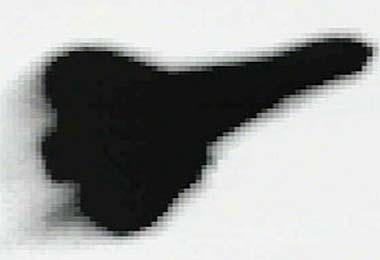| . |  |
. |
|
CAPE CANAVERAL, Florida (AFP) Feb 07, 2003
High-definition images taken by the Air Force in New Mexico about a minute before it broke up over Texas show that the left inboard wing is jagged near where it begins to intersect the fuselage, according to Aviation Week and Space Technology and NBC television, which cited sources close to the investigation. "The ragged edge on the left leading edge, indicates that either a small structural breach -- such as a crack -- occurred, allowing the 2,500 F (1370 C) re-entry heating to erode additional structure there, or that a small portion of the leading edge fell off at that location," an Aviation Week article said. "Either way, the damage affected the vehicle's flying qualities as well as allowed hot gases to flow into critical wing structure -- a fatal combination." NBC, quoting a source familiar with the investigation, said there was "heavy structural damage on the left wing near the fuselage."
 But NASA space shuttle programme manager Ron Dittemore drew no such conclusion publicly, telling a news conference that studying the photos was "challenging and difficult and proceeding slowly". He said the images were provided by the Air Force Starfire telescope at Kirkland Air Force Base in New Mexico. Dittemore showed one of the photos which showed the edges of the shuttle blurred because it had been enlarged so much. "We have looked at it during the week. And it's not tremendously revealing to us yet," he said. "We are asking experts to do an evaluation of the photo to see if there's anything in this particular photo that would help us understand if there was anything wrong on the left wing." The National Aeronautics and Space Administration (NASA) earlier confirmed investigators were studying critical video and photo images of Columbia's last moments and that a "significant" part of one of the wings had been found. "We have recovered a partial wing leading edge RCC panel, that's reinforced carbon-carbon panel," Dittemore said. "It's 26 to 27 inches (66-68.5 cm) long with 18 inches (46 cm) of wing structure still attached. We are still trying to determine whether or not it is the left or the right wing." NASA investigators say that as Columbia re-entered the Earth's atmosphere, temperatures rose significantly on the left side of its fuselage, especially around the wheel well. Its autopilot tried to compensate for increased drag on the left wing, firing steering jets to right the space shuttle and keep the vehicle pointed straight ahead. But the shuttle lost the battle more than 61,000 meters (200,000 feet) over Texas and 16 minutes short of its scheduled landing in Cape Canaveral. Investigators are looking into whether a piece of foam insulation that broke off one of Columbia's external fuel tanks on liftoff January 16, and hit the underside of the left wing, could have played a role. But Aviation Week posited that a structural breach could have been key to the disaster. A break could have allowed the 1,400-degree Celsius blowtorch-strength heat to melt part of the wing structure which is resistant only up to 175 degrees C. Another possibility is that a small piece of the thermal protective layer somehow detached in part, it reported. The wings feature a leading-edge reinforced carbon-carbon layer able to withstand temperatures of up to more than 1,260 degrees Celsius, and even as high as 1,650. NASA experts sorting through thousands of pieces of wreckage found mainly in Texas are particularly keen to find pieces of the left wing. Investigators are also trying to decipher garbled data recorded by computers 32 seconds after voice contact with the crew broke off, and to determine if the shuttle started breaking up above California, earlier than initially thought. The lost crew members were: Michael Anderson, David Brown, Kalpana Chawla, Laurel Clark, Rick Husband, William McCool and Ilan Ramon, Israel's first astronaut.
|
|